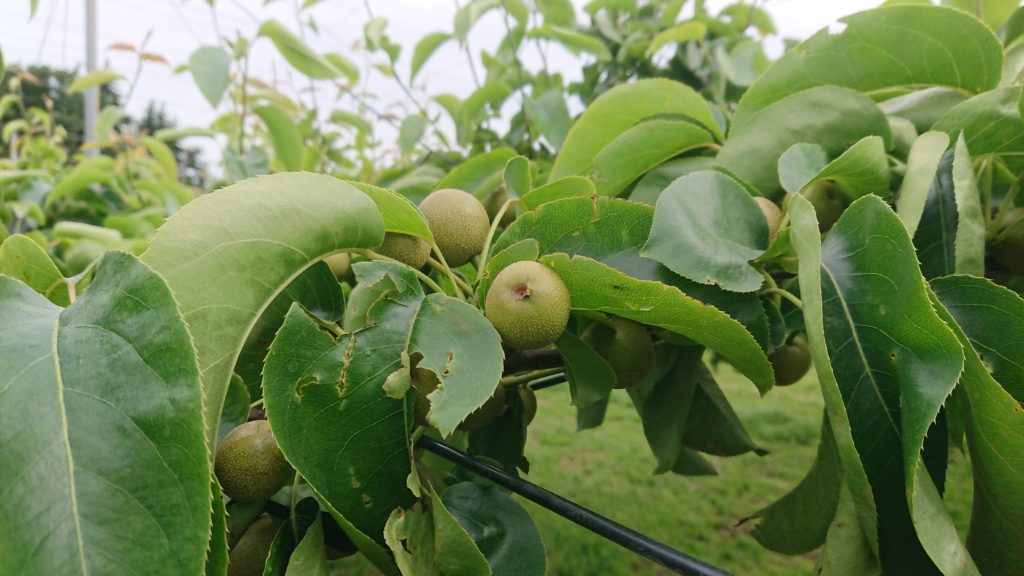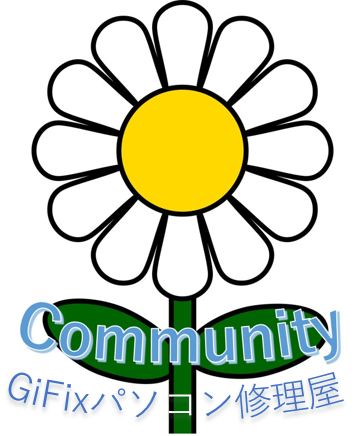私は、今季節性の臨時労働者です。

私は、先週から、近所の梨農家の摘果作業を手伝っています。
今まで、半日ずつ6日間、手伝いました。
一時間に500円をいただけることになっています。
梨の摘果作業とは、実をひとつだけ残して他は切り落とす作業です。
梨の花は、1つの房に約7つの実ができます。
ひとつの実だけにすることによって、大きな梨の実にすることができるのです。

梨の摘果は、上を向いてハサミで切り取ります。
ずっと上を向いているので、首が痛くなります。
最近、やっと痛くなくなりました。

また、ひとつだけ残して切り捨てるのは、心が傷みます。
それぞれ実は、優劣をつけるのが難しいほど、良く育っています。
ひとつのために、それらを犠牲にするのです。
切られる実はかわいそうに、と思います。
日本の梨は、大変な作業をかけて作られます。
梨ばかりでなく、日本の農業は、手間暇がかかります。これが伝統です。
私は、改めて、大変驚きました。
“Nasi Tekika” work. Cutting off many small baby pears into one.
I am now a seasonal temporary worker.
Since last week, I’ve been helping a local pear farmer with fruit cutting work.
So far, I’ve been helping out for six days, half a day at a time.
You will receive 500 yen per hour.
Pear cutting work is the process of cutting off the baby pears, leaving only one fruit.
A pear flower bed can produce about 7 fruits in one cluster.
By making only one fruit, you can make a big pear fruit.
I am facing up with scissors, and cutting off the stem of the baby pear.
Looking up all the time makes my neck hurt.
Recently, the pain is finally gone.
Also, leaving only one and throwing away others hurts my heart.
In fact, each of them is growing so well that it is difficult to give superiority or inferiority.
Sacrifice them for one thing.
I feel sorry for the cut fruit.
Japanese pears are made with a lot of work.
Agriculture in Japan, not just pears, takes time and effort. This is the tradition.
Once again, I was very surprised.
This is “Nasi Tekika” work.
